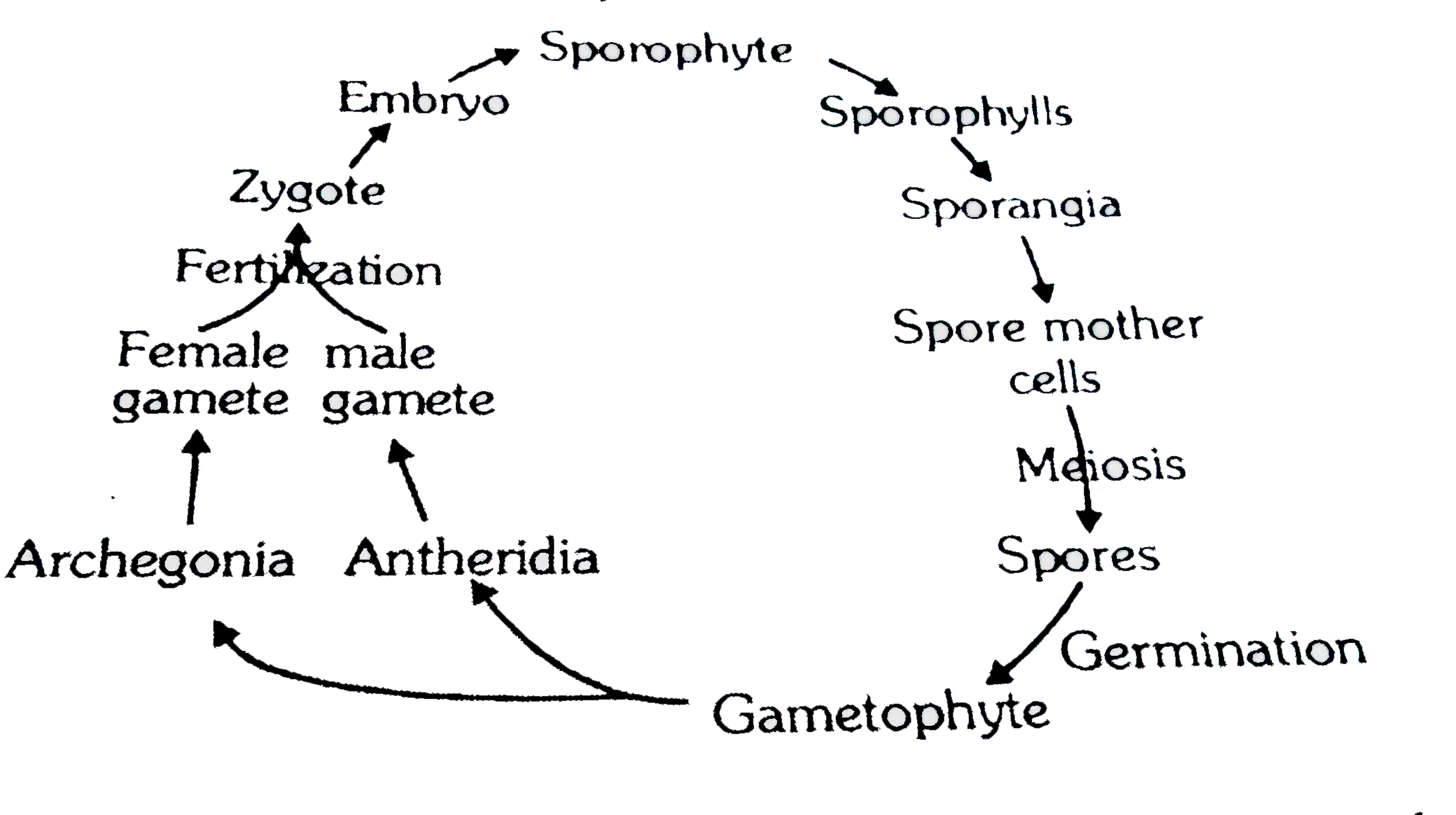Explain gameto phytic and sporophytic generations in an angiosperm.
Step-by-Step Solution:
1. Definition of Angiosperms: Angiosperms are flowering plants characterized by the presence of seeds enclosed within a fruit. They exhibit two distinct generations: the gametophytic generation and the sporophytic generation.
2. Gametophytic Generation:
- The gametophytic generation is haploid, meaning it has one set of chromosomes (n).
- In angiosperms, the male and female gametes are produced from the haploid gametophyte through the process of mitosis.
- The male gametophyte develops into pollen grains, while the female gametophyte develops within the ovule, forming the embryo sac.
- The male and female gametes are produced by meiosis, which generates genetic diversity.
3. Sporophytic Generation:
- The sporophytic generation is diploid, meaning it has two sets of chromosomes (2n).
- It begins with the formation of megaspores in the ovule, which are diploid in nature.
- These megaspores undergo meiosis to produce haploid spores, which then develop into the female gametophyte.
- In the sporophytic generation, one of the megaspores develops into a functional haploid gametophyte, which will eventually produce the female gamete.
4. Fertilization:
- The male and female gametes produced from the gametophytic generation fuse during fertilization to form a diploid zygote.
- This zygote then develops into a new sporophyte, completing the life cycle of the angiosperm.
5. Conclusion:
- The alternation of generations between the haploid gametophytic generation and the diploid sporophytic generation is a key feature of angiosperms, allowing for reproduction and genetic variation.
---
- The gametophytic generation is haploid, meaning it has one set of chromosomes (n).
- In angiosperms, the male and female gametes are produced from the haploid gametophyte through the process of mitosis.
- The male gametophyte develops into pollen grains, while the female gametophyte develops within the ovule, forming the embryo sac.
- The male and female gametes are produced by meiosis, which generates genetic diversity.
- The sporophytic generation is diploid, meaning it has two sets of chromosomes (2n).
- It begins with the formation of megaspores in the ovule, which are diploid in nature.
- These megaspores undergo meiosis to produce haploid spores, which then develop into the female gametophyte.
- In the sporophytic generation, one of the megaspores develops into a functional haploid gametophyte, which will eventually produce the female gamete.
- The male and female gametes produced from the gametophytic generation fuse during fertilization to form a diploid zygote.
- This zygote then develops into a new sporophyte, completing the life cycle of the angiosperm.
- The alternation of generations between the haploid gametophytic generation and the diploid sporophytic generation is a key feature of angiosperms, allowing for reproduction and genetic variation.
Topper's Solved these Questions
- PLANT KINGDOM BOOK - ICSECHAPTER - PLANT KINGDOM EXERCISE - REVIEW QUESTIONS (SHORT ANSWER TYPE QUESTIONS)
11 Videos
- PLANT GROWTH AND DEVELOPMENTBOOK - ICSECHAPTER - PLANT GROWTH AND DEVELOPMENTEXERCISE - NCERT EXERCISES WITH ANSWERS (DIFFERENTIATE BETWEEN)
11 Videos
- QUESTION PAPER -BIOLOGYBOOK - ICSECHAPTER - QUESTION PAPER -BIOLOGYEXERCISE - PART -II (Section -C)
6 Videos
Similar Questions
Differentiate between Gametophytic and sporophytic generation
View SolutionStudy the following life cycle of Pteridophytes:-

How many structure represent gametophytic & sporophytic generations, respectively?
View SolutionWhat is alternation of generations in angiosperms?
View SolutionRead the given statements and select the correct option,
Statement-1: Bryophytes show alternation of generation
Statement-2: A haploid gametophytic generation and a diploid sporophytic generation alternate in the life cycle.
View SolutionThe first cell of sporophytic generation in bryophyta is:-
View SolutionA plant in which sporophytic generation is represented by zygote only
View SolutionExplain reproduction in a bryophyte. Explain gametophytic and sporophytic phase.
View SolutionA leafy non vascular plant with parasitic sporophytic generation should properly be classified in
View Solution(a) Explain the process of microsporogenesis in angiosperms.
(b) Draw a labelled diagram of a nature pollen grain.
View SolutionWhich generation-gametophytic or sporophytic is well developed in bryophytes ?
View Solution
